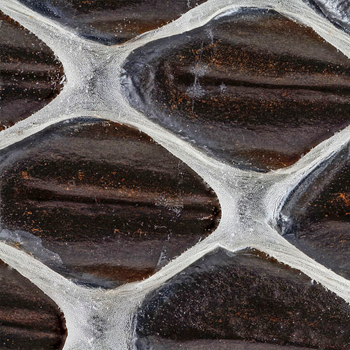#1#. Start by moving #-sqrt(x-5)# to the right side of the equation.
#sqrt(2x+1)-sqrt(x-5)=3#
#sqrt(2x+1)=3+sqrt(x-5)#
#2#. Since both sides contain radical signs, square both sides.
#(sqrt(2x+1))^2=(3+sqrt(x-5))^2#
#(sqrt(2x+1))(sqrt(2x+1))=(3+sqrt(x-5))(3+sqrt(x-5))#
#3#. Simplify.
#2x+1=color(red)9+6sqrt(x-5)color(blue)+(color(blue)x# #color(purple)(-5))#
#2x# #color(blue)(-x)+1# #color(red)(-9)# #color(purple)(+5)=6sqrt(x-5)#
#x-3=6sqrt(x-5)#
#4#. Since the radical sign still exists on the right side of the equation, square both sides again.
#(x-3)^2=(6sqrt(x-5))^2#
#(x-3)(x-3)=(6sqrt(x-5))^2#
#5#. Simplify.
#x^2-6x+9=36(x-5)#
#x^2-6x+9=36x-180#
#6#. Move all terms to the left side of the equation.
#color(violet)1x^2# #color(turquoise)(-42)x# #color(darkorange)(+189)=0#
#7#. Use the quadratic formula to solve for #x#.
#color(violet)(a=1)color(white)(XXX)color(turquoise)(b=-42)color(white)(XXX)color(darkorange)(c=189)#
#x=(-b+-sqrt(b^2-4ac))/(2a)#
#x=(-(color(turquoise)(-42))+-sqrt((color(turquoise)(-42))^2-4(color(violet)1)(color(darkorange)(189))))/(2(color(violet)1))#
#x=(42+-sqrt(1764-756))/2#
#x=(42+-sqrt(1008))/2#
#x=(42+-12sqrt(7))/2#
#x=(2(21+-6sqrt(7)))/(2(2))#
#x=(color(red)cancelcolor(black)2(21+-6sqrt(7)))/(color(red)cancelcolor(black)2(1))#
#color(green)(|bar(ul(color(white)(a/a)x=21+-6sqrt(7)color(white)(a/a)|)))#

